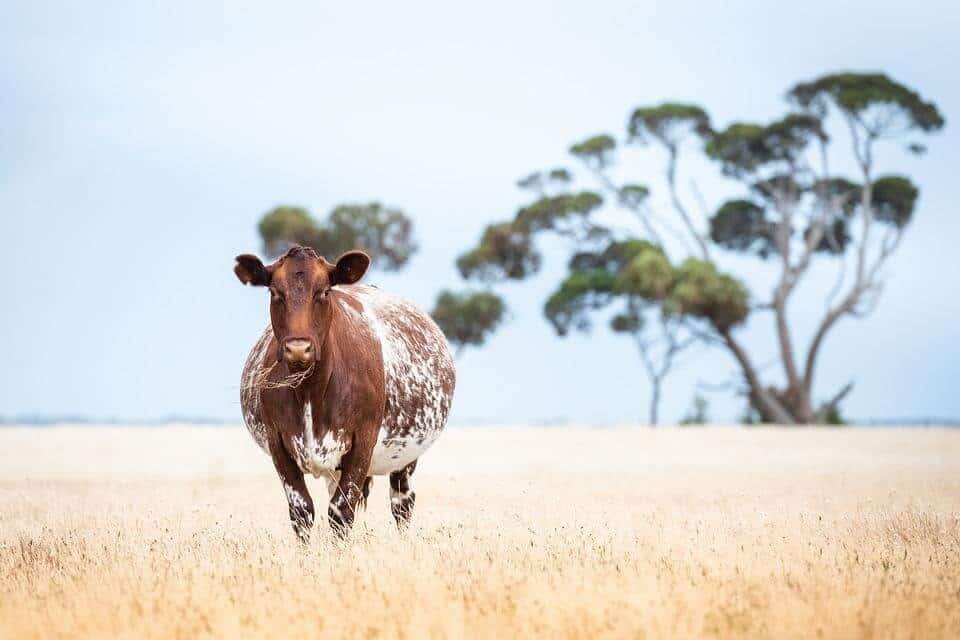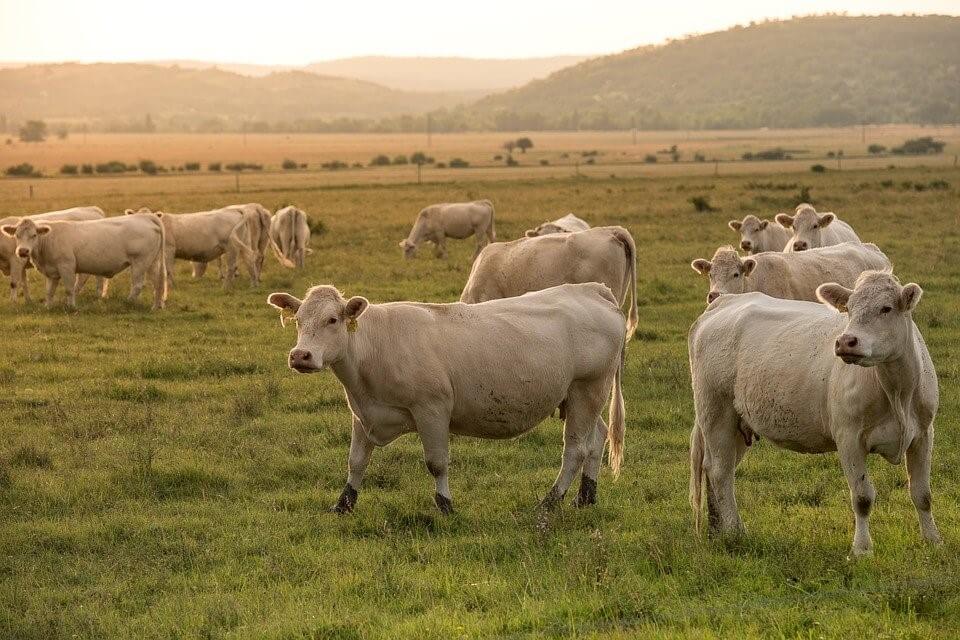Few things are quite as exciting to most cow breeders as having pregnant cows in the herd. This often means that, with the right management, the herd size and milk production will increase as soon as the cows give birth. But how long are cows pregnant, and what kind of complications can you expect during this gestation period?
In months, a cow is pregnant for 9 months. Note, a heifer is a female bovine who has not given birth. A cow is a female bovine who has given birth to at least one calf. Pregnancy length is the same for heifers and cows.
How Long Is a Cow’s Gestation Period
How long is your cow going to be pregnant? On average, a cow’s gestation period is about the same amount of time as a human pregnancy — 9 months, or about 283 days. This period is considered typical for most bovine breeds.
It should be noted, however, that cows carrying bull calves tend to have a slightly longer gestation period than cows carrying heifer calves. That being said, the average gestation length in cows is 283 days, but can range from 279-298 days.
Just as it’s the case with humans, there are often several complications associated with a cow’s pregnancy. That’s one of the main reasons why breeders or farmers need to keep a vigilant eye on any pregnant cows in their herd.
Now that we know your cow will be pregnant for at around 9 months, let’s take a look at the entire process, from when the heifer or cow is in heat to how you can tell that the cow is pregnant, as well as some tips on how to deal with calving difficulties.
How to Tell When Your Cow Is in Heat
As a farmer, your ability to detect a cow’s heat cycles can be an invaluable skill if you intend to organically grow your herd.
There are estrus inducing products on the market that can help force an estrus cycle in a cow in order to synchronize a herd’s cycle. Failing to detect when your cow is in heat, or breeding cows that aren’t in heat, can lead to low conception rates within the herd leading to some economic losses.
Whether you are going the artificial insemination (AI) route or naturally breeding, knowing the optimum time when your heifers are ready to receive the semen will be critical.
Knowing the signs for a cow being in estrus (in heat) will not only reduce the calving intervals, but will also give you a higher chance of conception. This can decrease the semen expense when it comes to artificial insemination, or a renting expense if you are renting a bull.
A cow is said to be in heat or estrus every 21 days. The estrus cycle is essentially 24 hours. This is when the cow is influenced by increased estrogen levels, which causes the heifer to show some signs of heat.

Since estrus only lasts around 24 hours it is important to be watching your cows closely for signs or heat. This is when ovulation begins and the egg is released.
If this egg isn’t fertilized within that period, the breeding will be ineffective, and you will have to wait another 21 days for the estrus cycle to come around again.
According to research, a cow’s standing heat (when she can be impregnated) often lasts between 15 to 18 hours but lasts for as little as 8 to as many as 30 hours. It’s important to recognize the signs of heat in your cows in time to avoid missing the window.
Here are some signs that your cow is in heat and ready to be bred.
Swelling or Reddening of the Cow’s Vulva
In many cases, the cow’s vulva will swell during heat and moisten and redden on the inside. However, these signs often come about before the heat and remain in place for some time after the heat. As such, you shouldn’t use them as a precise estrus indicator. At least not independently.
Mucus Discharge
Since the cow’s estrogen levels are elevated when in heat, you may observe some strands of mucus being secreted from the vulva, or some may be smeared on its tail, flanks and perineal region. In some cases, however, you may not observe any mucus discharge at all until the cow has been palpated during artificial insemination.
Mounting Other Cows
Most heifers will start mounting other cows when they are in heat or are just coming into heat. This can be true even if there are bulls around.
Standing to Be Mounted
This is one of the most common signs of estrus in heifers or older cows. This is where the term “standing heat” comes from. Cows that stand to be mounted are often in heat. Those that move away from bulls that attempt to mount them, often aren’t in estrus.
Heifers may be less willing to stand for heat than cows since it is their first time. In many cases, cows will stand to be mounted between 20 and 55 times within their reproductive cycle.
Restlessness and Bellowing
In most cases, you will find that cows in heat are restless and more alert than most other cows in the same herd. They will often stand while their herd mates are either laying down or resting; they will bellow frequently and trail other cows and try to mount them.
Cows exhibiting this behavior should be monitored closely as they are in heat and may start exhibiting standing behavior. Cows exhibit other signs and habits in heat. These include:
- Sniffing
- Licking
- Chin resting
- Lip curling
- Head raising
- Decreased feed intake
In most cases, these signs will be more evident in young heifers than in older cows.
Tips on How to Tell When Your Cow Is Pregnant
Ideally, every breeding season should lead to a 100% conception rate within the herd. If you are concerned about whether or not your cows are pregnant, here are some signs you can look out for after the breeding season.
Growing Udders
One of the main reasons pregnant cows are so profitable is because they start producing milk. In preparation for that milk production, the udders of the pregnant cow will begin to get enlarged. This is particularly noticeable in heifers and less so in mature cows.
The udders on a heifer will noticeably enlarge, while those on a mature cow will only seem to grow a little since they were already enlarged from previous pregnancies and calving seasons.
However, this does not occur until later in the pregnancy. If you are hoping to breed again in the next estrus cycle, you will want to know if your cow is pregnant before you will notice larger udders.
Learn facts about cow udders, including how many udders does a cow have.
Round Abdomen
You will notice the cow’s abdomen is rounder and bigger later in the pregnancy. This tends to occur during the 4th or 5th month of pregnancy.
Much like enlarged udders, this will take time to notice. You might consider other methods of confirming pregnancy to know sooner.
Higher Progesterone Levels in the Milk
Cows tend to give milk during and after pregnancy. One way to tell if the breeding season was a success is to test the progesterone levels in the milk of the bred or inseminated cows. If the levels are higher than usual, there’s a good chance that the cow might be pregnant.
Physical Examination
The most accurate and quickest way to test if an insemination was successful is a physical examination. Often, cattle producers will work with a veterinarian to “preg-check” their cattle.
Physical examinations can include various tests that can be done at almost any time during the pregnancy. These include:
- Ultrasound
- Rectal palpation
- Abdominal ballottement
- Plasma test
How to Tell When a Cow Is About to Give Birth
Now that we know how to tell when a cow is pregnant, let’s take a quick look at how to tell when it’s about to give birth to a calf. As mentioned, the duration of the pregnancy is around 9 months, but it also depends on the age of the heifer or cow and sex of calf (heifer calf or bull calf) the cow is carrying and how many.
It’s generally easier to tell how long a cow has been pregnant and, therefore, when it’s about to give birth by simply counting from the day of the breeding or insemination. However, some factors often lead to early calving in cattle.

Here are some signs that your cow is about to give birth:
- Fuller udders
- Relaxation of the pelvic ligament
- Reduced feed intake
- Separating or isolating from the rest of the herd
Even though a cow having “fuller udders” isn’t always a reliable sign, especially in dairy cows or mini milking cows that have full udders anyway, it can be one of the signs to look out for in conjunction with the rest. It’s also quite effective on beef cows or beef cattle that don’t always have full udders.
Be on the lookout for these signs in case your cow experiences birthing or calving difficulty and may need your assistance. If the heifer is in its very first calving season, it’s advisable to have a doctor of veterinary medicine present to ensure calving ease.
Attention by a qualified vet will also help improve the cow’s body condition or health in preparation for the next breeding season. This can help increase the cow’s ability to conceive again, which will help increase your farm’s productivity and and hopefully, it’s profitability. Learning how long is a cow pregnant will help you prepare for the calves.

